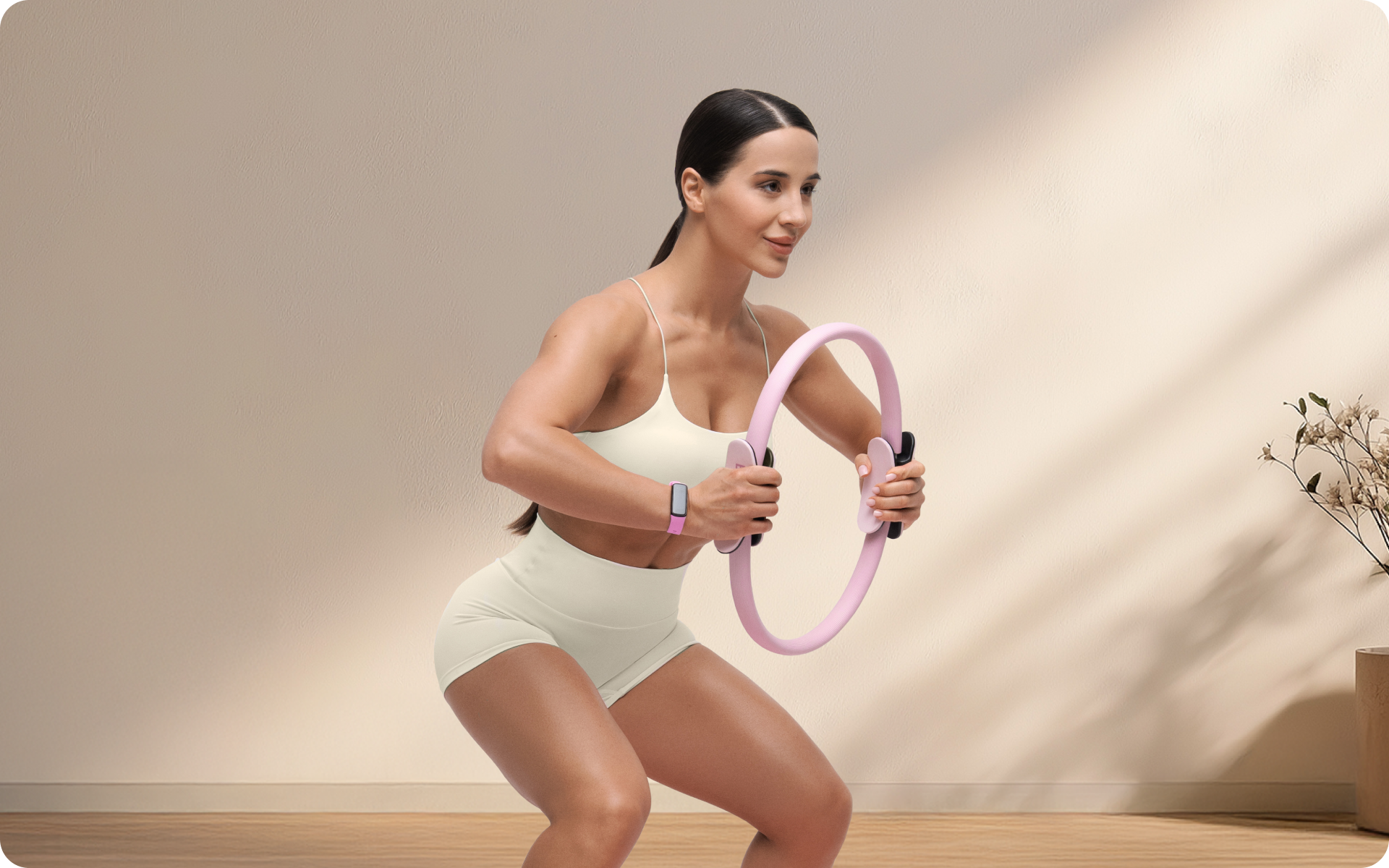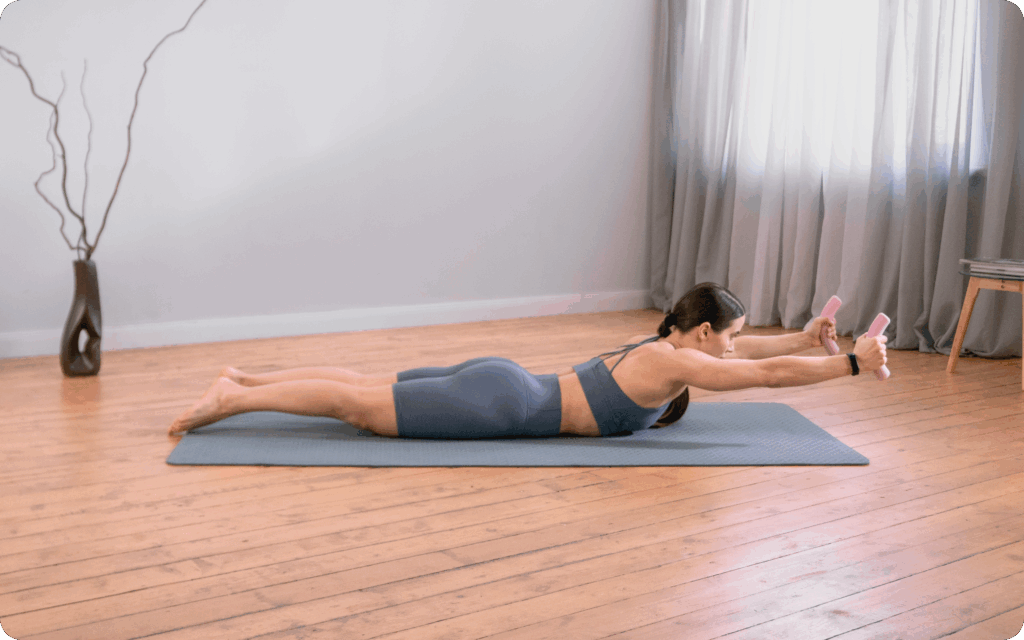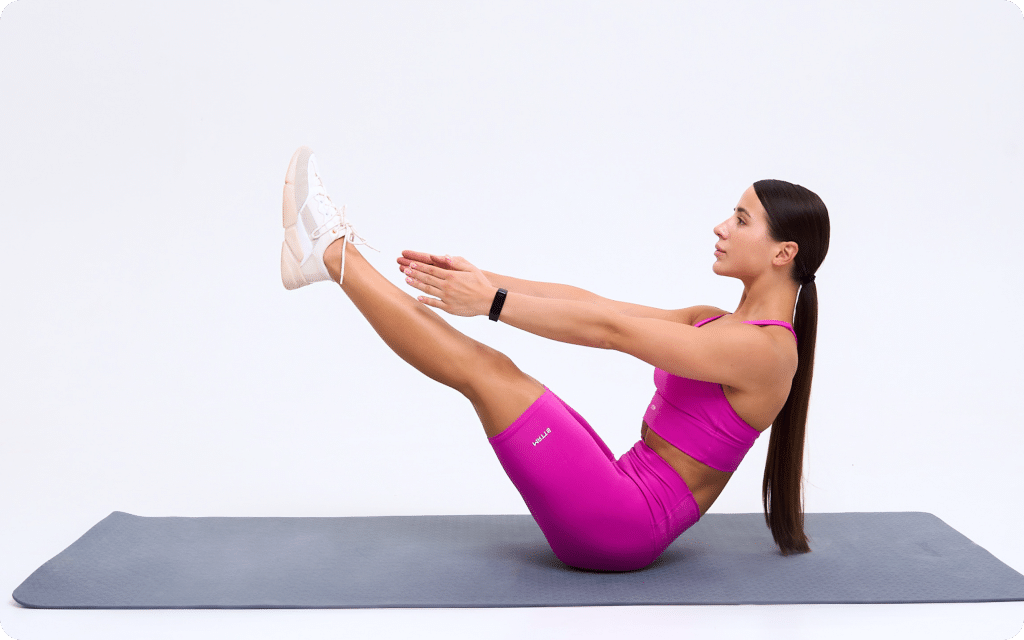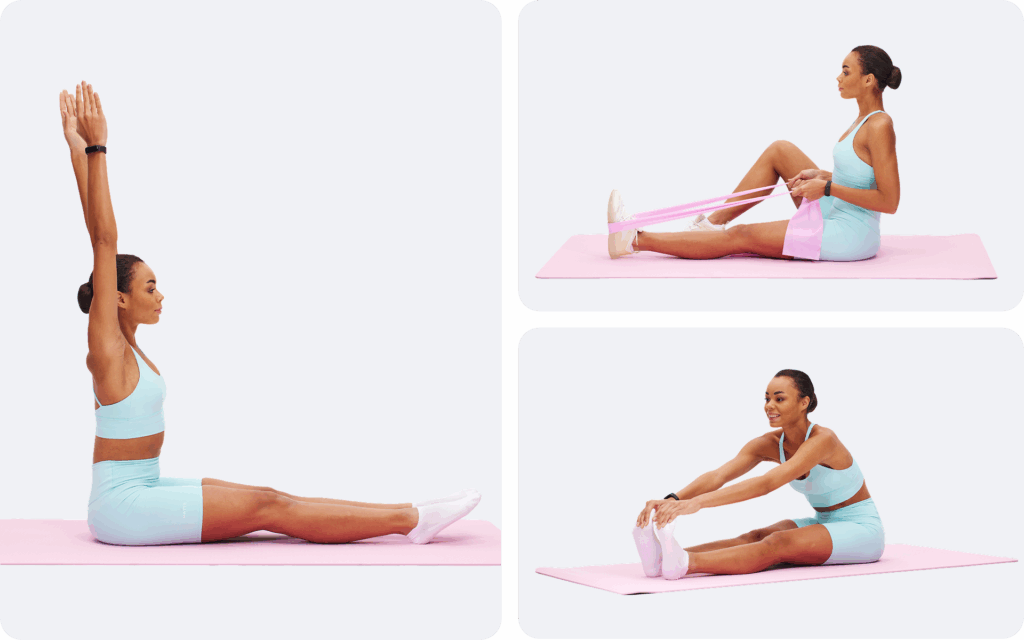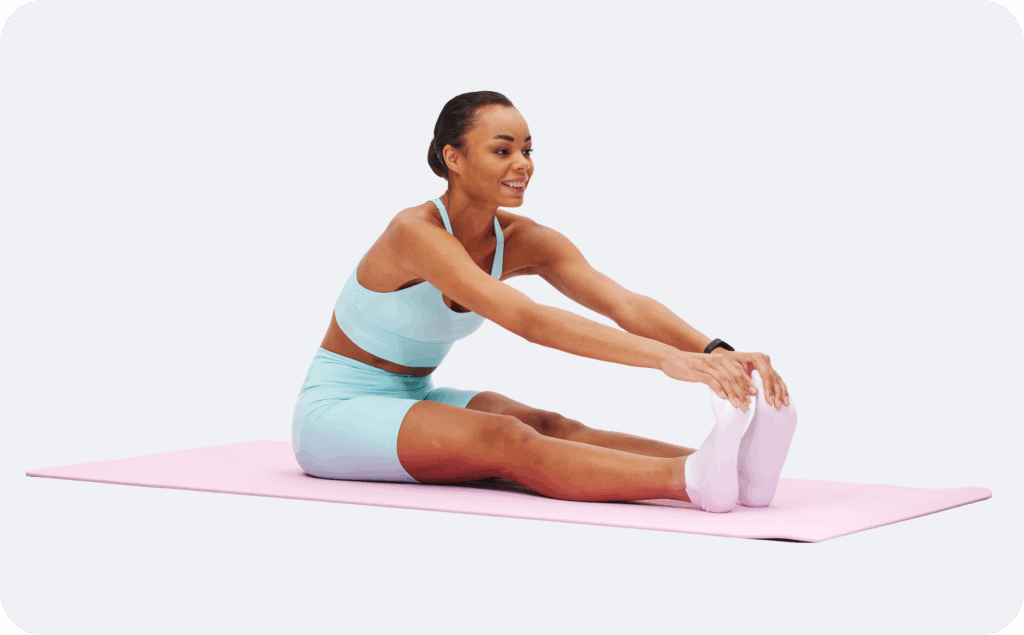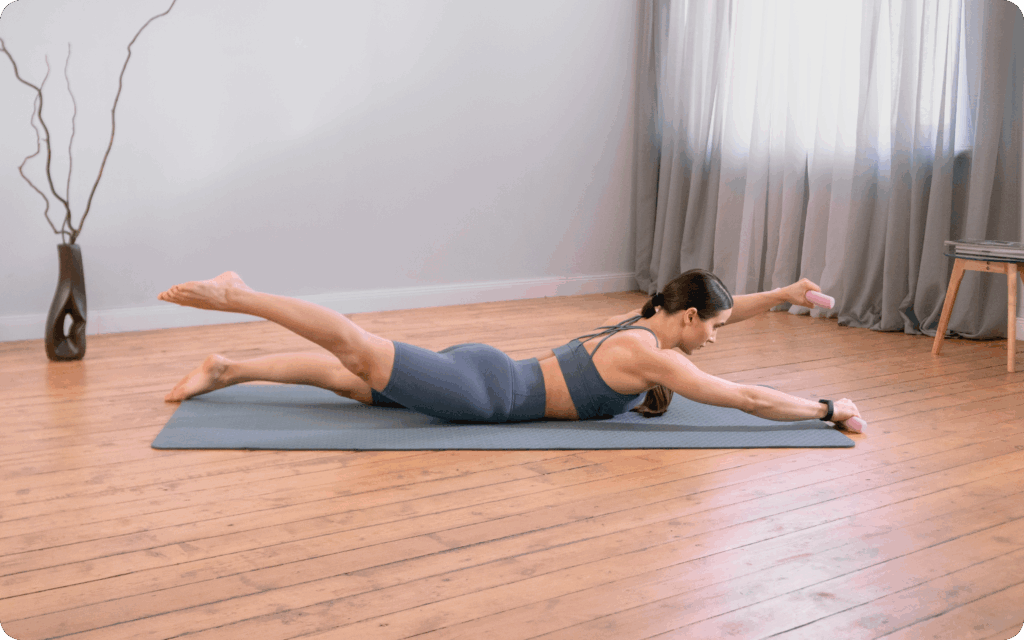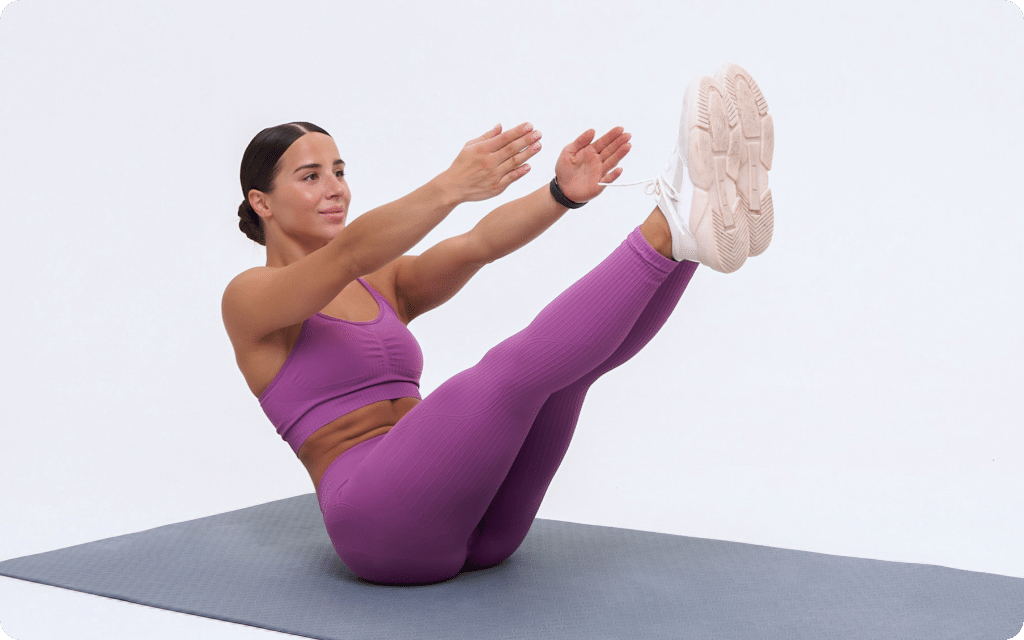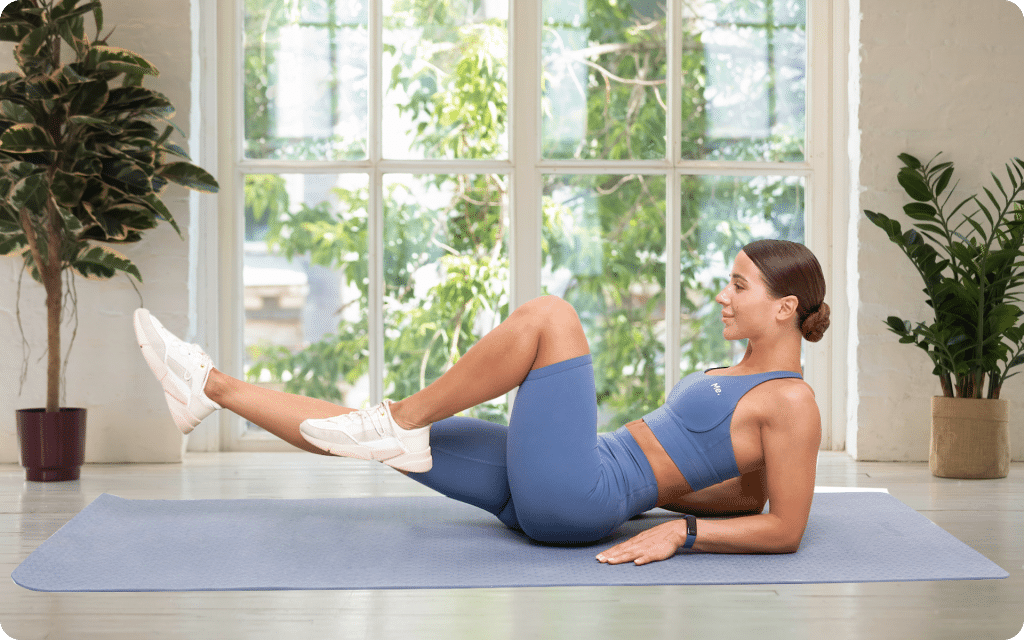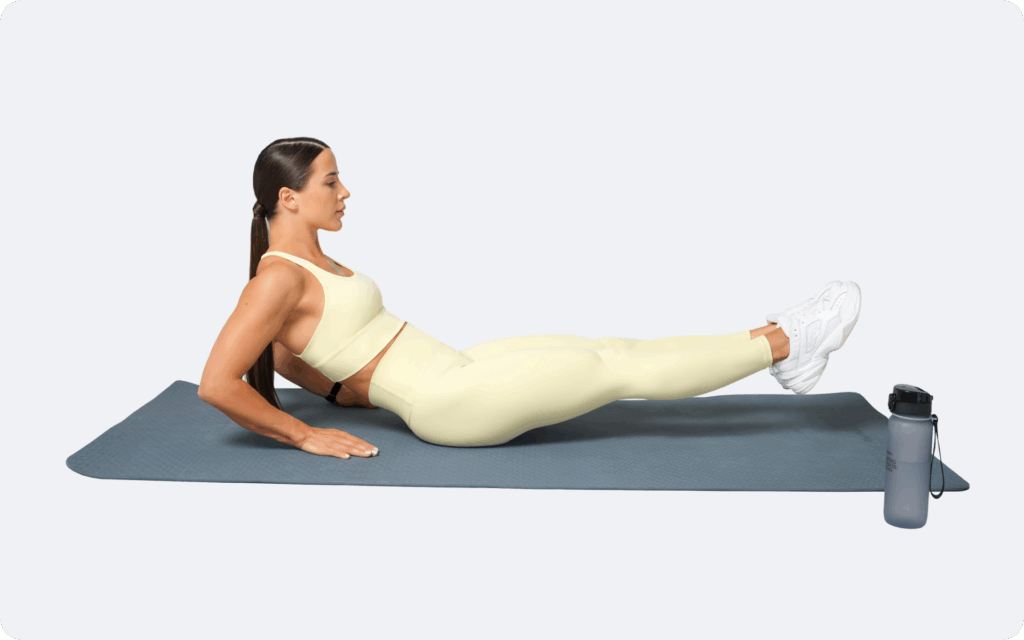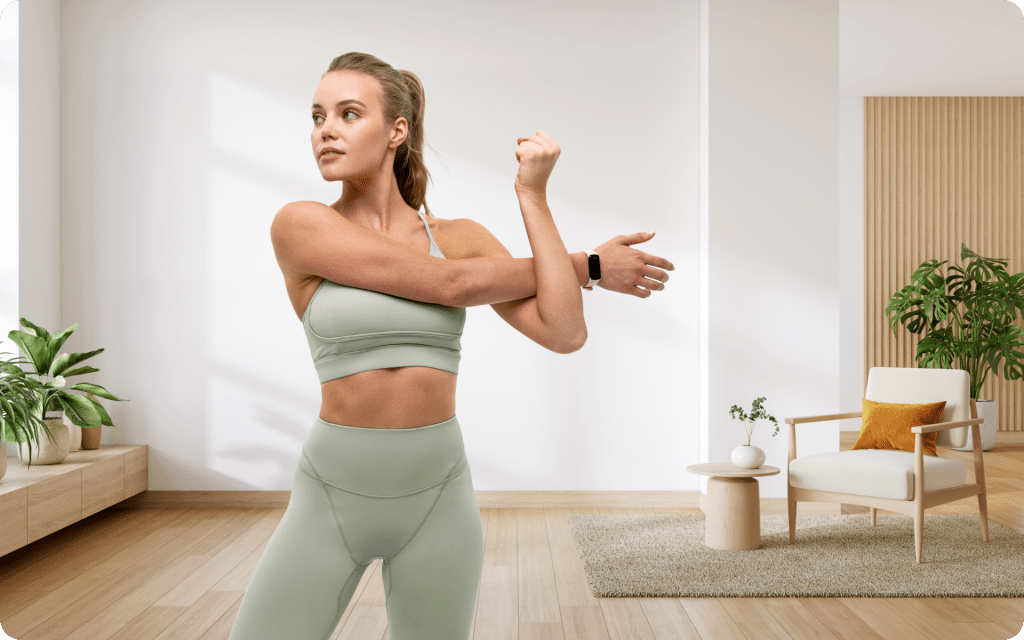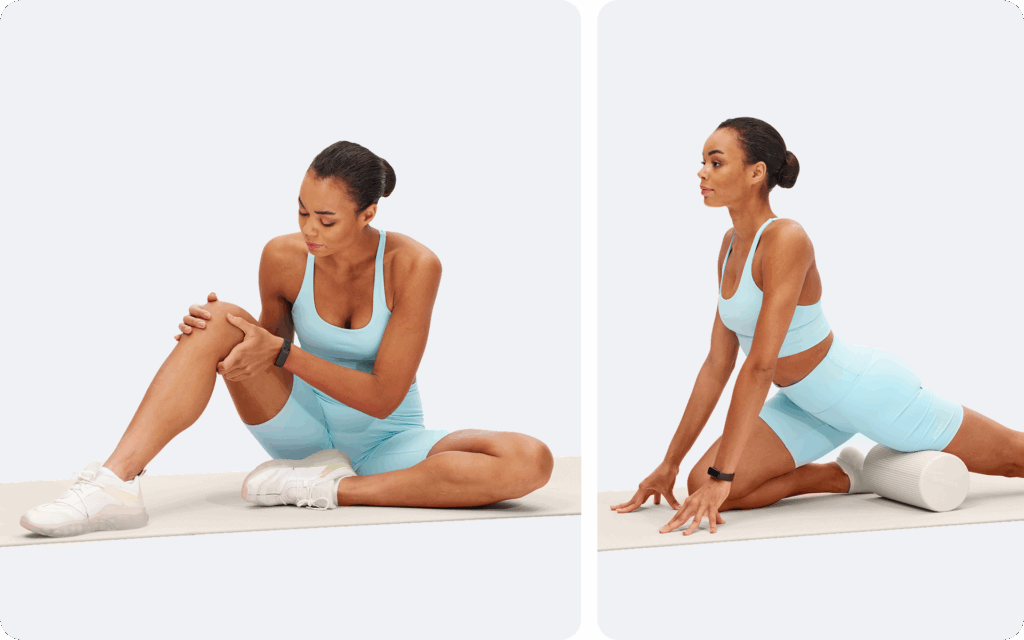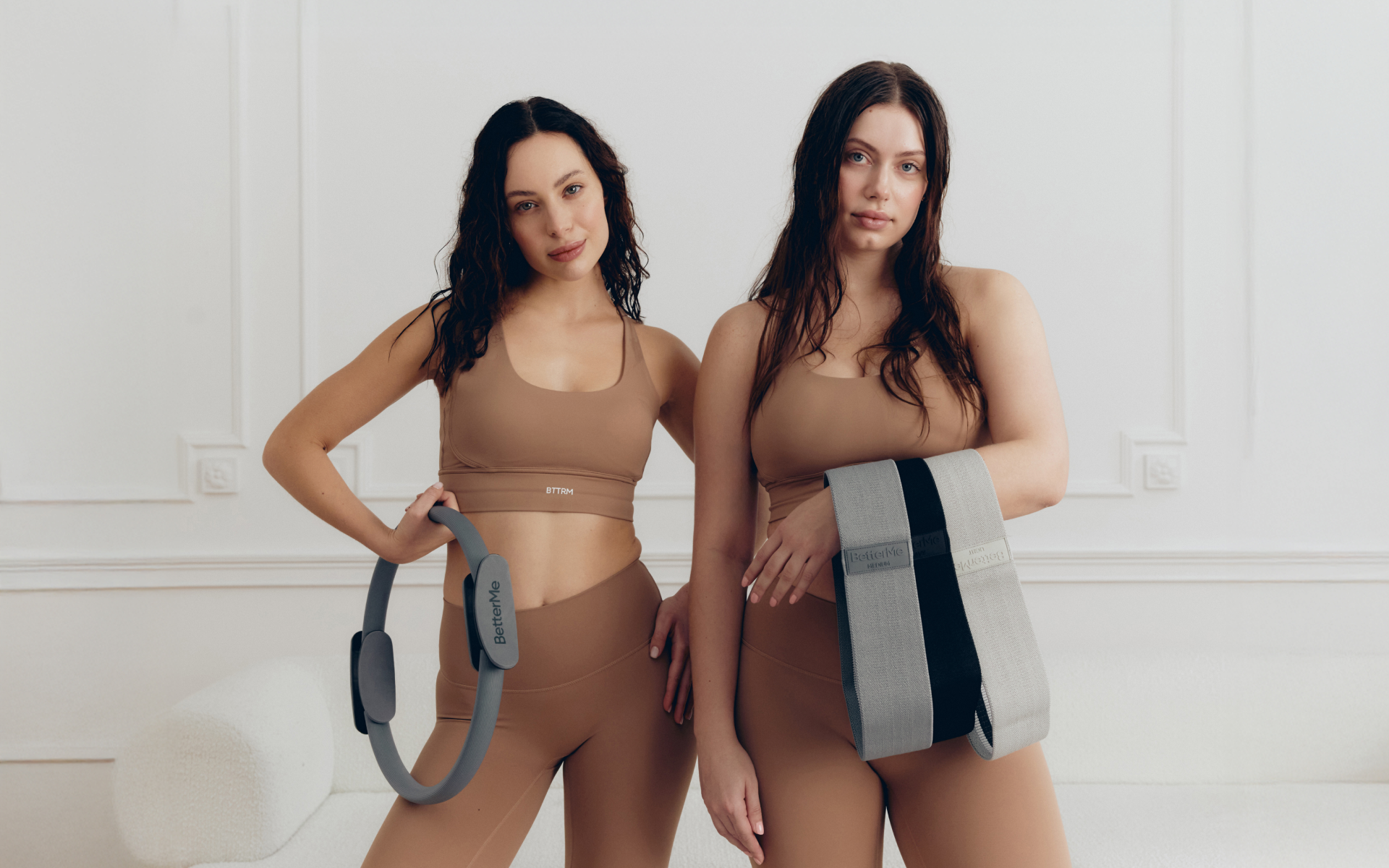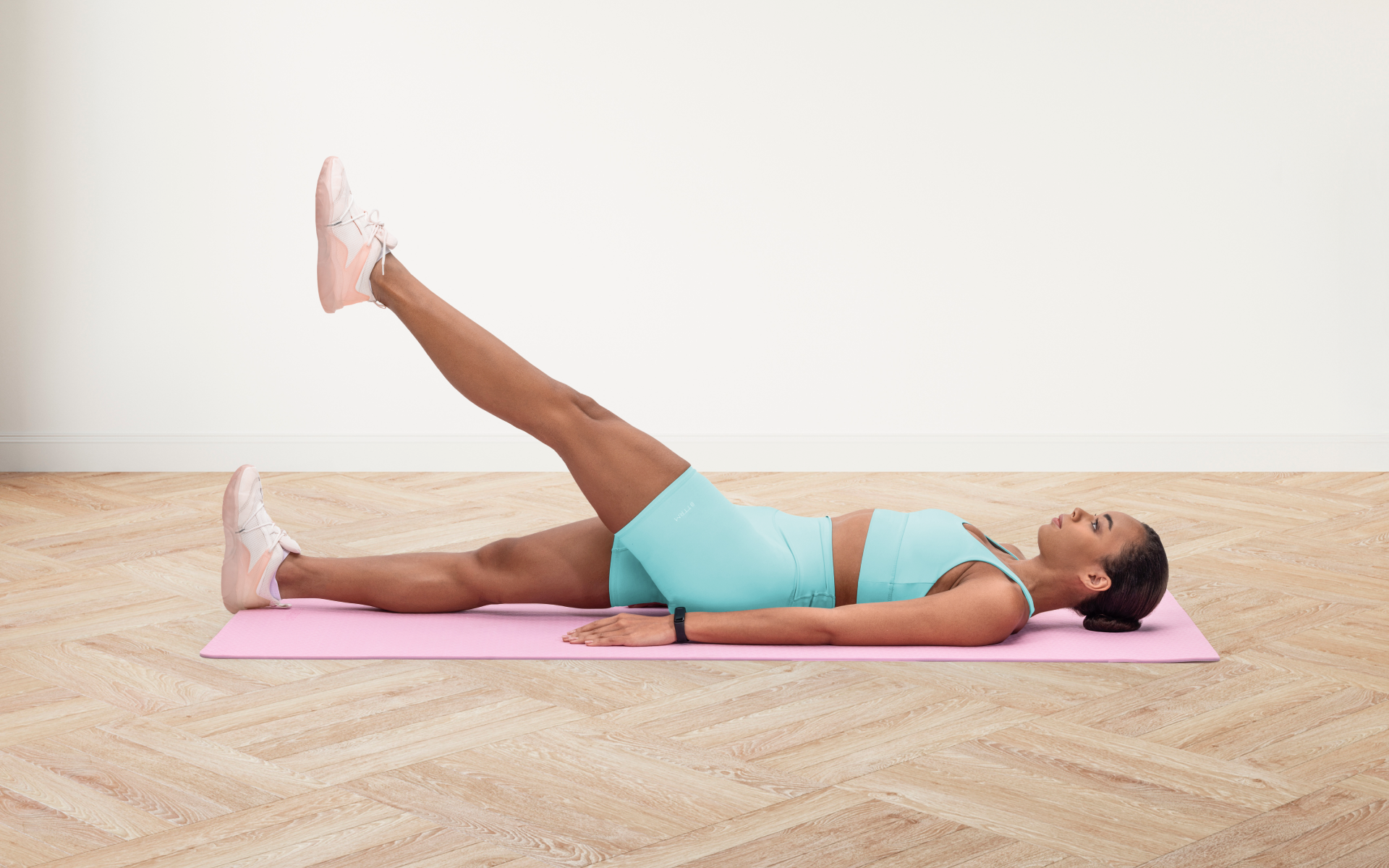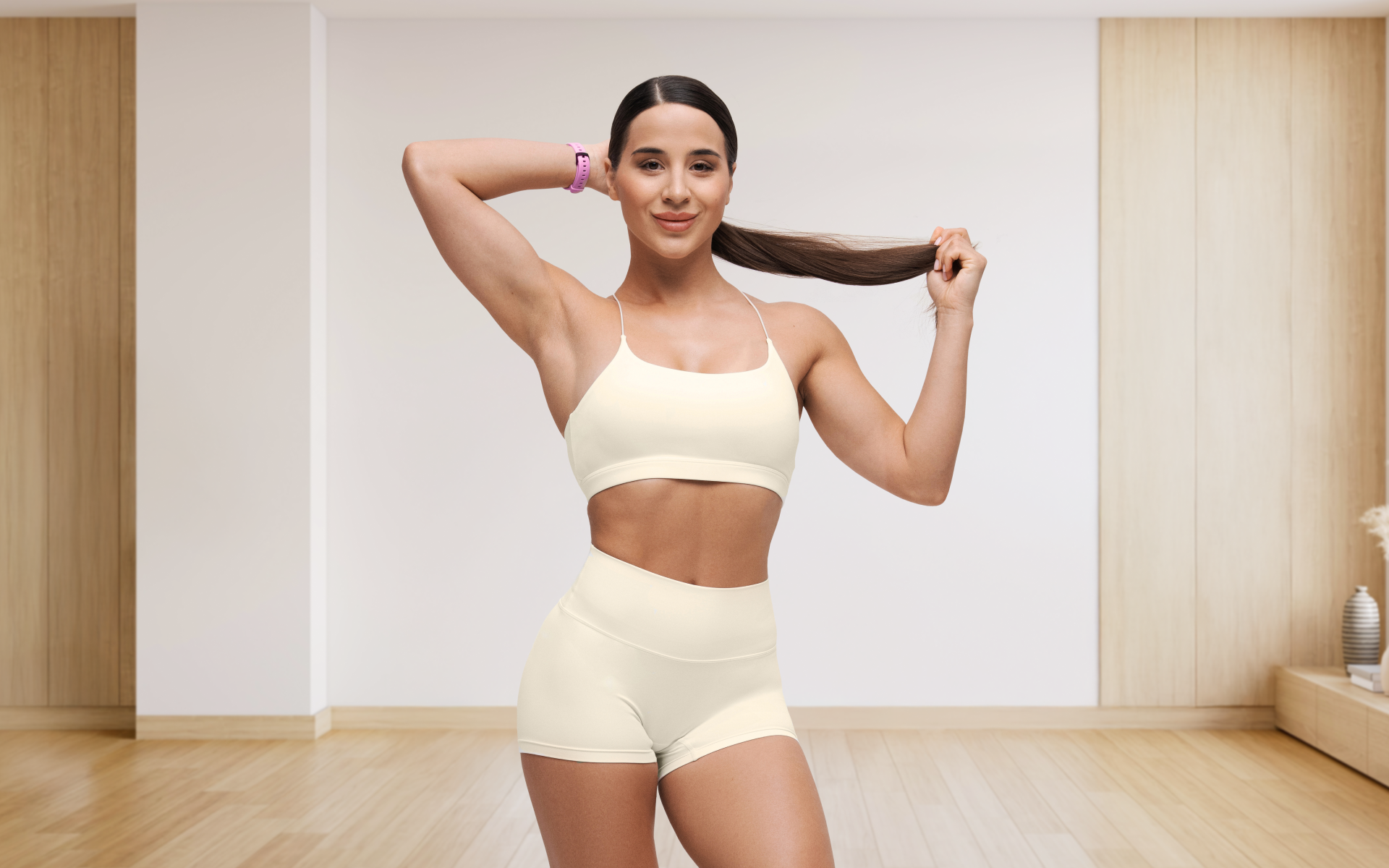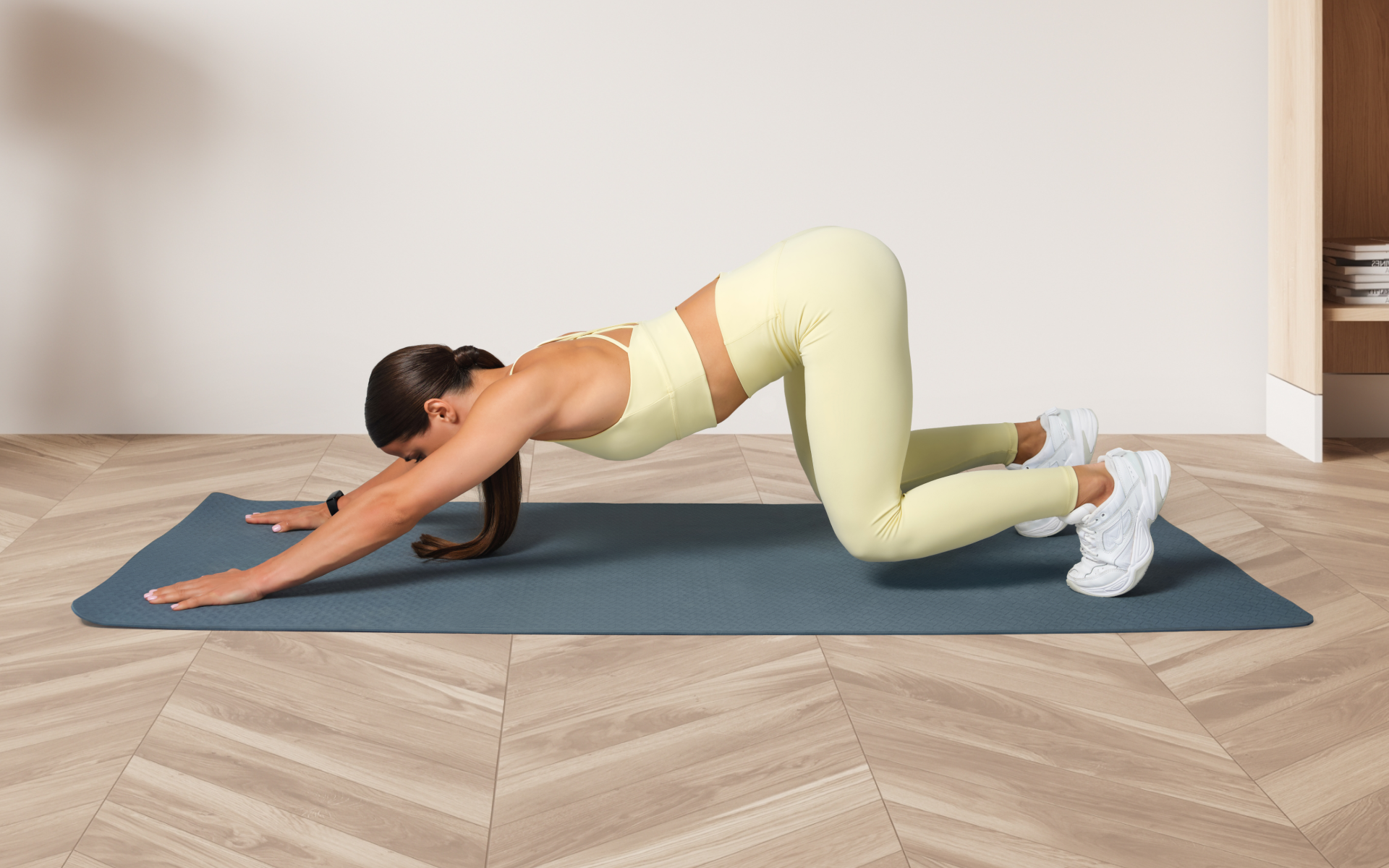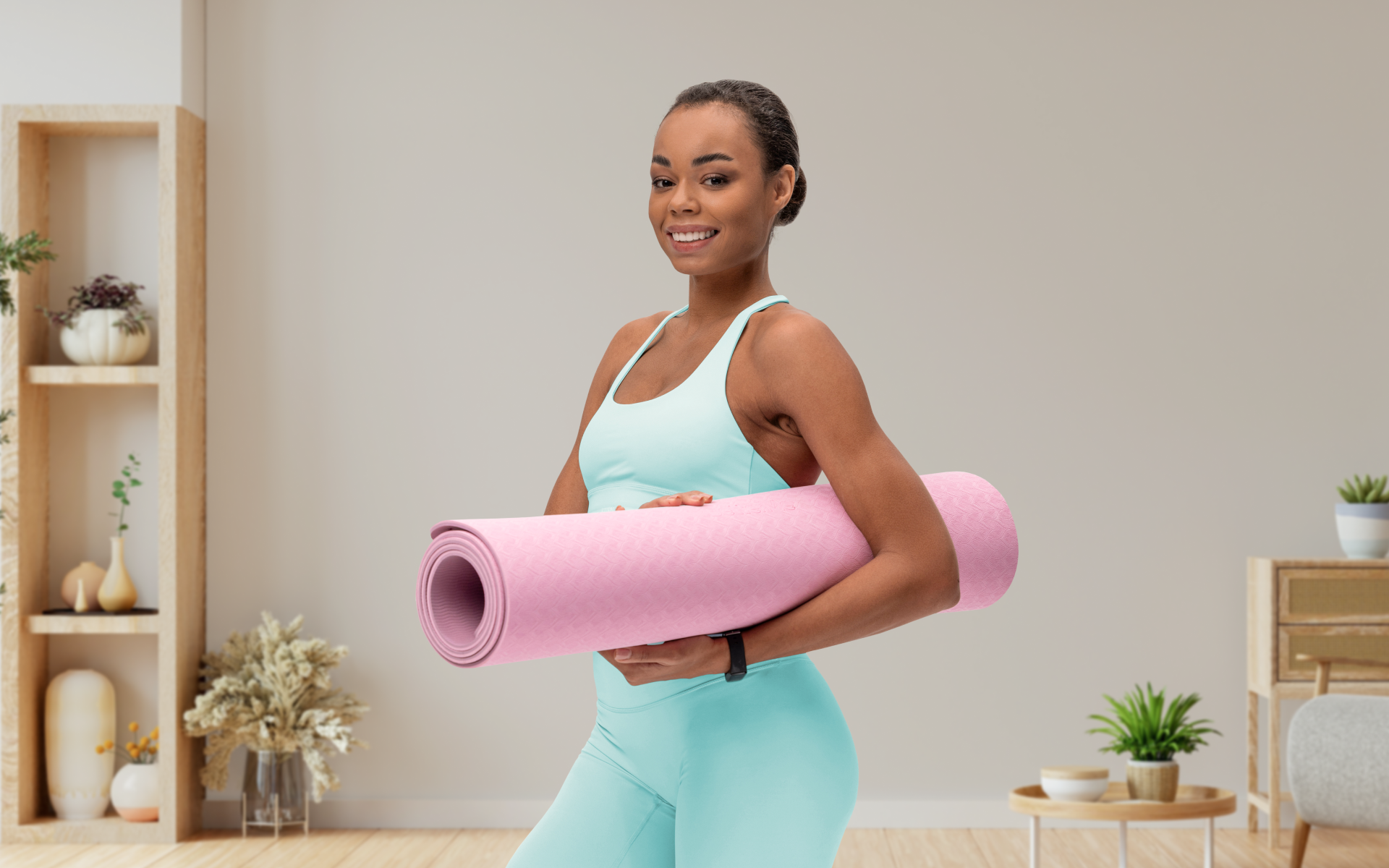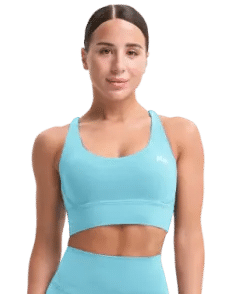Getting started with a new fitness routine can feel like a big commitment.
You want a program that is effective but not overwhelming, something that builds strength without demanding hours in the gym.
If this sounds familiar, a beginner’s Pilates routine might be exactly what you need.
Pilates is a low-impact form of exercise that focuses on core strength, flexibility, and controlled movements to build a strong, balanced body.
This guide provides a structured, beginner-friendly weekly Pilates routine designed to introduce you to the foundational movements of this powerful practice.
We will break down a simple 3-day workout split, including specific exercises for each of your upper body, lower body, core, and cardio areas.
You will learn:
- How to perform each movement correctly
- The necessary equipment for exercises
- How to adapt the routine to fit your life.
By the end, you’ll have a clear plan to start your Pilates journey with confidence.
What Is A Beginner-Friendly Pilates Weekly Routine?
A beginner-friendly Pilates routine focuses on mastering foundational movements with proper form and technique.
Most expert trainers design Pilates programs to be approachable, preventing burnout while still delivering results.
We outline the routine here, adapted from the original exercises in Joseph Pilates’ book, “Return to Life Through Contrology,” for those new to the practice (1).
So, what is a Pilates weekly routine for progress?
This Pilates weekly routine for beginners on a progressive path works as a 3-day workout week:
- 1 day for the upper body
- 1 day lower body
- 1 day for core and cardio
This Pilates split allows you to work different muscle groups effectively while giving your body ample time to recover.
This program differs from a typical reformer pilates weekly routine, primarily because the required equipment is more accessible.
Equipment Needed:
- A comfortable Pilates or yoga mat
- A small block or folded blanket (optional, for modifications)
Notes On the Program:
- Rest: Aim for 30-60 seconds of rest between sets.
- Missed Days: If you miss a day, don’t worry. You can either pick up where you left off or wait for the next scheduled workout day. Consistency is more important than perfection.
Whether you’re looking to simply pep up your fitness routine, jazz up your diet with mouth-watering low-calorie recipes or want to get your act together and significantly drop that number on your scale – BetterMe: Health Coaching app has got you covered! Improve your body and revamp your life!
The 3-Day Weekly Pilates Program
Here is the breakdown of your weekly routine.
Perform each workout on non-consecutive days (e.g., Monday, Wednesday, and Friday) to allow for adequate rest.
Day 1: Upper Body Focus
- The Roll Up: 3 sets of 3-5 reps
- The Roll-Over: 3 sets of 3-5 reps
- Spine Stretch: 3 sets of 3 reps
- Rolling Back: 3 sets of 6 reps
- The Saw: 3 sets of 3 reps per side
- Swimming: 3 sets of 20-30 seconds
Day 2: Lower Body Focus
- The Hundred: 3 sets (start with 20-40 reps, build to 100)
- The One Leg Circle: 3 sets of 5 reps per leg
- Rocker With Open Legs: 3 sets of 6 reps
- Hip Twist: 3 sets of 3-5 reps per side
- The Cork-Screw: 3 sets of 3 reps per side
- Swimming: 3 sets of 20-30 seconds
Day 3: Core & Cardio
- The One Leg Stretch: 3 sets of 5-10 reps per leg
- The Double Leg Stretch: 3 sets of 6-10 reps
- Cardio: 20-30 minutes of brisk walking, swimming, or light cycling.
The goal is to elevate your heart rate to a moderate level where you can still hold a conversation.
How To Perform The Pilates Exercises
Proper form is crucial in Pilates to maximize benefits and prevent injury.
Here’s how to perform each of the exercises in your Pilates weekly routine at home.
The Roll Up
This exercise strengthens the abdominals and increases spinal mobility.
- Lie flat on your back with your arms stretched straight behind you and your legs straight in front of you.
- Inhale slowly as you bring your arms forward and up, perpendicular to the floor.
- Begin to exhale, tucking your chin to your chest.
- Continue exhaling as you “peel” your spine off the mat, one vertebra at a time, reaching your hands toward your feet.
- Keep your abdominals drawn in and roll forward until your forehead touches your legs.
- Inhale as you begin to roll back down, vertebra by vertebra, to the starting position.
The Roll-Over
This movement strengthens the core and mobilizes the spine.
- Lie flat on your back with your arms by your sides, palms down.
- Inhale and lift your legs to a 90-degree angle.
- Exhale as you press into your arms and lift your hips, reaching your legs up and over your head in a C-curve shape until your toes touch the floor behind you.
- Separate your legs to shoulder-width apart.
- Inhale as you slowly roll your spine back down to the mat.
- Once your hips are down, exhale and lower your legs back to the starting position.
Spine Stretch
The spine stretch is excellent for the back of the body and helps improve posture.
- Sit tall with your legs extended in front of you, about shoulder-width apart. Flex your feet.
- Extend your arms straight out in front of you at shoulder height.
- Inhale to prepare.
- Exhale as you tuck your chin to your chest and roll your spine forward, reaching toward your feet. Keep your abs pulled in.
- Imagine you are stretching up and over a large ball to create space between your vertebrae.
- Inhale as you stack your spine back up to a tall, seated position.
Rolling Back
This exercise acts as a massage for the spine.
- Sit on the mat with your knees bent and feet flat.
- Grasp your ankles or the backs of your thighs.
- Lift your feet off the floor, balancing on your ischial tuberosities, also known as your sit bones.
- Round your spine into a C-curve, tucking your chin to your chest.
- Inhale as you roll back to your shoulder blades, keeping the C-curve shape.
- Exhale as you roll back up to the starting position, maintaining your balance without letting your feet touch the floor.
The Saw
The Saw targets the obliques and improves spinal rotation.
- Sit tall with your legs extended and spread wide.
- Extend your arms out to the sides at shoulder height, palms facing down.
- Inhale as you twist your torso to the right.
- Exhale as you reach your left hand toward your right foot, “sawing” off your pinky toe in three small, pulsing motions. Your right arm reaches back and up.
- Inhale as you return to the center.
- Repeat on the other side.
BetterMe will shake off your mental funk, rid you of your energy-zapping habits, and help you sculpt the body of your dreams. Intrigued? Hurry up and change your life for the better!
Swimming
This exercise strengthens the entire back of your body, including your glutes, hamstrings, and back extensors.
- Lie on your stomach with your arms extended in front of you and legs stretched behind you.
- Pull your navel up and away from the mat to engage your core.
- Inhale and lift your right arm and left leg off the mat simultaneously.
- Exhale and switch, lifting your left arm and right leg.
- Continue alternating in a “swimming” motion, keeping your torso stable.
- Breathe continuously as you move.
The Hundred
A classic Pilates warm-up, The Hundred helps build core strength and improve circulation.
- Lie on your back with your knees bent into your chest (tabletop position).
- Lift your head and shoulders off the mat.
- Extend your legs out to a 45-degree angle (or higher for a less challenging position).
- Extend your arms long by your sides, hovering a few inches off the mat.
- Begin pumping your arms up and down vigorously.
- Inhale for 5 pumps and exhale for 5 pumps. Repeat this breath pattern 10 times for a total of 100 pumps.
The One Leg Circle
This exercise challenges pelvic stability and mobilizes the hip joint.
- Lie on your back with your arms by your sides. Extend your left leg long on the mat.
- Bring your right leg up toward the ceiling, keeping it as straight as possible.
- Keeping your pelvis still, circle the right leg across your body, down, and around to the starting position.
- Complete 5 circles in one direction, then reverse for 5 circles in the other direction.
- Switch legs and repeat.
Rocker With Open Legs
This movement massages the spine while challenging balance and core control.
- Sit on the mat and balance on your sit bones.
- Grasp your ankles and extend your legs into a “V” shape.
- Keep your spine long and chest open.
- Inhale and roll back to your shoulder blades, maintaining the V-shape with your legs.
- Exhale and roll back up to the starting position, finding your balance.
The Cork-Screw
This advanced exercise will challenge your core stabilization.
- Lie on your back with your legs extended toward the ceiling.
- Glue your legs together and press your arms into the mat. Circle your legs to the right, down, and around to the left, returning to the center.
- Keep the circle small and controlled, ensuring your hips stay relatively stable on the mat.
- Reverse the circle to the left.
The One Leg Stretch
This movement is the first exercise in the classic ab series, targeting deep abdominal muscles.
- Lie on your back and bring your knees to your chest.
- Lift your head and shoulders off the mat, tucking your chin.
- Extend your left leg out to a 45-degree angle.
- Place your right hand on your right ankle and your left hand on your right knee, hugging it toward your chest.
- Inhale as you switch legs, bringing the left knee in and extending the right leg out.
- Continue alternating legs with each breath.
The Double Leg Stretch
This move continues the core work, challenging endurance and coordination.
- From the One Leg Stretch position, bring both knees into your chest.
- Place your hands on your shins.
- Inhale as you extend your arms and legs out in opposite directions, creating a long line with your body.
- Exhale as you circle your arms around and hug your knees back into your chest.
Looking for even more ways to practice a Pilates weekly routine at home?
For days when you are short on time, try a daily wall Pilates routine.
How Often Should You Do Pilates Per Week?
Joseph Pilates famously recommended practicing his method, which he called “Contrology,” 4 times a week to achieve mastery over the body (1).
For a beginner, this might feel ambitious.
- The 3-day Pilates routine we outlined in this article is an excellent starting point for beginners.
As you build strength and confidence, you can increase your frequency of training.
For example, you could repeat the 2-day split (Upper Body and Lower Body) twice a week, for a total of 4 workout days, with one day reserved for active rest or cardio.
Alternatively, you could transition to a 2-day upper/lower split, with one full-body day and one dedicated to cardio.
The key is to listen to your body and find a schedule that feels sustainable.
If you opt for a full-body Pilates weekly routine, be careful not to overtrain.
Ensure at least 24-48 hours of rest in between workouts (2).
If you need more variety in your routine, consider exploring a Pilates weekly workout plan that incorporates different exercise combinations.
Intense sweat sessions, working weight loss tips, lip-smacking recipes come in one package with the BetterMe: Health Coaching app—all at your fingertips, start transforming your life now!
Do You Need Rest Days From Pilates?
Yes, rest days are essential for any fitness routine, including Pilates. Rest allows your muscles time to repair and rebuild, which is when you actually get stronger (2).
On your rest days, you don’t have to be completely sedentary. Engaging in “active rest” activities, such as a gentle walk, stretching, or a leisurely bike ride, can aid recovery and keep your body moving (3).
Listen to your body’s signals. If you feel excessively sore, fatigued, or unmotivated, it may be a sign that you need an extra day of rest.
What Happens If I Do Pilates Every Day?
While the low-impact nature of Pilates makes it gentler on the joints than other forms of exercise, doing it every single day without rest is not recommended, especially for beginners. Overtraining can lead to muscle fatigue, decreased performance, and an increased risk of injury (4). Your body needs time to recover to reap the full benefits of your workouts.
A more sustainable approach is to incorporate Pilates into an active lifestyle.
On your non-Pilates days, you could go for a walk, swim, or try a different form of exercise, such as yoga or light strength training. This variety will challenge your body in new ways and prevent mental and physical burnout.
Many individuals believe that they must practice a Pilates weekly routine for weight loss every single day, but extreme methods are unsustainable. Recovery is crucial, especially for weight loss progress.
Those with limited mobility or seeking gentle options can also try Pilates chair workout routines to stay active without overexertion.
Read more: Is Pilates Good for Posture?
Yes, Pilates is an excellent way to tone your body. It focuses on strengthening abdominal muscles through controlled, precise movements (7), which might lead to a leaner, more sculpted appearance rather than bulk. Practicing Pilates on an empty stomach isn’t necessary, but it’s best to avoid doing So right after a large meal. Having a light snack about an hour before your workout can provide you with the energy you need without causing discomfort (8). Pilates is highly effective for strengthening the entire core (7, 9), including the deep transverse abdominis muscles, which act like a natural corset for your midsection (10). Consistent Pilates practice can help flatten and firm the abdominal area. Absolutely. Many Pilates exercises, such as variations of planks, push-ups, and movements involving resistance, are fantastic for toning the muscles in the arms, including the triceps and biceps (11). Building a strong, resilient body doesn’t require extreme workouts or endless hours at the gym. This beginner’s weekly Pilates routine offers a balanced and effective path to improved strength, flexibility, and overall well-being. By focusing on foundational movements and listening to your body, you can create a sustainable practice that will serve you for years to come. Start with this 3-day plan, stay consistent, and be patient with your progress. You are on your way to discovering the transformative power of Pilates.Frequently Asked Questions
Does Pilates tone your body?
Is it better to do Pilates on an empty stomach?
Does Pilates help a saggy belly?
Can Pilates tone flabby arms?
Start Your Pilates Journey Today
Should I Do Pilates In The Morning Or At Night?
The best time to do Pilates is whenever you can consistently fit it into your schedule.
Both morning and evening sessions have their benefits.
- Morning: A morning Pilates session can energize you for the day ahead, set a positive tone, and boost your metabolism (5).
- Night: An evening workout can be a great way to de-stress from the day and release tension; however, mental health benefits are also seen with morning workouts (6).
Experiment with both to determine what feels most comfortable for your body and lifestyle. Ultimately, consistency is the most crucial factor in achieving results.
The Bottom Line
Pilates isn’t just about flexibility or fancy moves — it’s about building strength, balance, and body awareness from the inside out. This 3-day weekly routine is your starting point for developing control, improving posture, and increasing mobility — all without the need for special equipment or hours in the gym.
Start slow, stay consistent, and listen to your body. Over time, those small, mindful movements will add up to noticeable strength, better alignment, and a calmer, more energized you. Whether you’re here to tone up, move with more grace, or simply feel better in your own skin, Pilates can help you do it — one controlled breath at a time.
DISCLAIMER:
This article is intended for general informational purposes only and does not serve to address individual circumstances. It is not a substitute for professional advice or help and should not be relied on for making any kind of decision-making. Any action taken as a direct or indirect result of the information in this article is entirely at your own risk and is your sole responsibility.
BetterMe, its content staff, and its medical advisors accept no responsibility for inaccuracies, errors, misstatements, inconsistencies, or omissions and specifically disclaim any liability, loss or risk, personal, professional or otherwise, which may be incurred as a consequence, directly or indirectly, of the use and/or application of any content.
You should always seek the advice of your physician or other qualified health provider with any questions you may have regarding a medical condition or your specific situation. Never disregard professional medical advice or delay seeking it because of BetterMe content. If you suspect or think you may have a medical emergency, call your doctor.
SOURCES:
- PILATES’ – Return to Life Through – Contrology (1945, books.out.csli.me)
- Why Rest Days Are Important for Muscle Building (n.d., blog.nasm.org)
- Active Recovery: Reduce Fatigue and Enhance Performance (2020,.issaonline.com)
- Overtraining Syndrome as a Complex Systems Phenomenon (2022, frontiersin.org)
- Morning vs. evening: the role of exercise timing in enhancing fat oxidation in young men (2025, frontiersin.org)
- Effect of Time-of-Day-Exercise in Group Settings on Level of Mood and Depression of Former Elite Male Athletes (2019, pmc.ncbi.nlm.nih.gov)
- Pilates: how does it work and who needs it? (2011, pmc.ncbi.nlm.nih.gov)
- Sporting performance and food (2024, betterhealth.vic.gov.au)
- The Relationship of Trunk Muscle Activation and Core Stability: A Biomechanical Analysis of Pilates-Based Stabilization Exercise (2021, pmc.ncbi.nlm.nih.gov)
- Core strengthening (2004, archives-pmr.org)
- The Mechanisms of Muscle Hypertrophy and Their Application to Resistance Training (2010, journals.lww.com)
